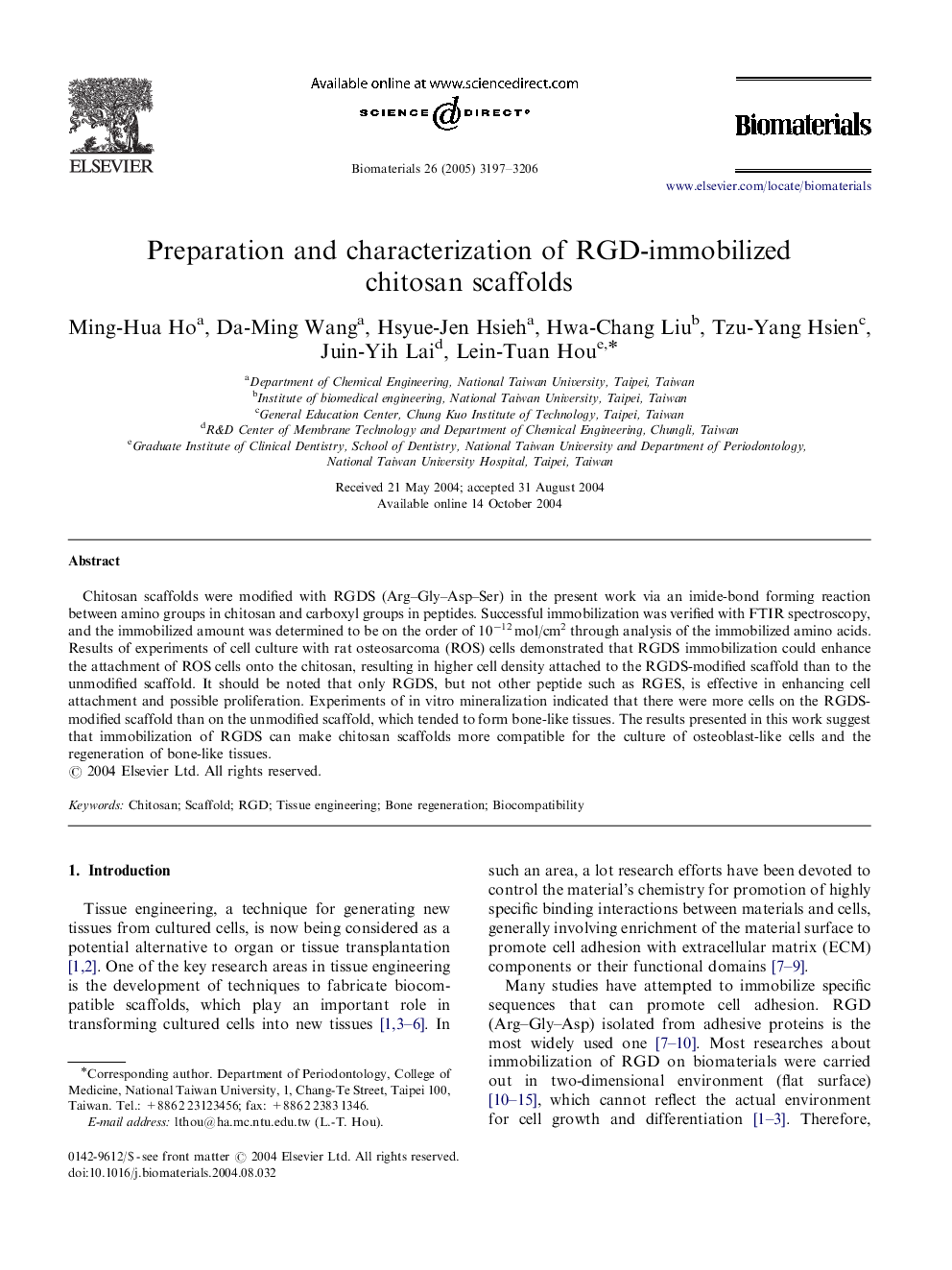| Article ID | Journal | Published Year | Pages | File Type |
|---|---|---|---|---|
| 12268 | Biomaterials | 2005 | 10 Pages |
Chitosan scaffolds were modified with RGDS (Arg–Gly–Asp–Ser) in the present work via an imide-bond forming reaction between amino groups in chitosan and carboxyl groups in peptides. Successful immobilization was verified with FTIR spectroscopy, and the immobilized amount was determined to be on the order of 10−12 mol/cm2 through analysis of the immobilized amino acids. Results of experiments of cell culture with rat osteosarcoma (ROS) cells demonstrated that RGDS immobilization could enhance the attachment of ROS cells onto the chitosan, resulting in higher cell density attached to the RGDS-modified scaffold than to the unmodified scaffold. It should be noted that only RGDS, but not other peptide such as RGES, is effective in enhancing cell attachment and possible proliferation. Experiments of in vitro mineralization indicated that there were more cells on the RGDS-modified scaffold than on the unmodified scaffold, which tended to form bone-like tissues. The results presented in this work suggest that immobilization of RGDS can make chitosan scaffolds more compatible for the culture of osteoblast-like cells and the regeneration of bone-like tissues.
